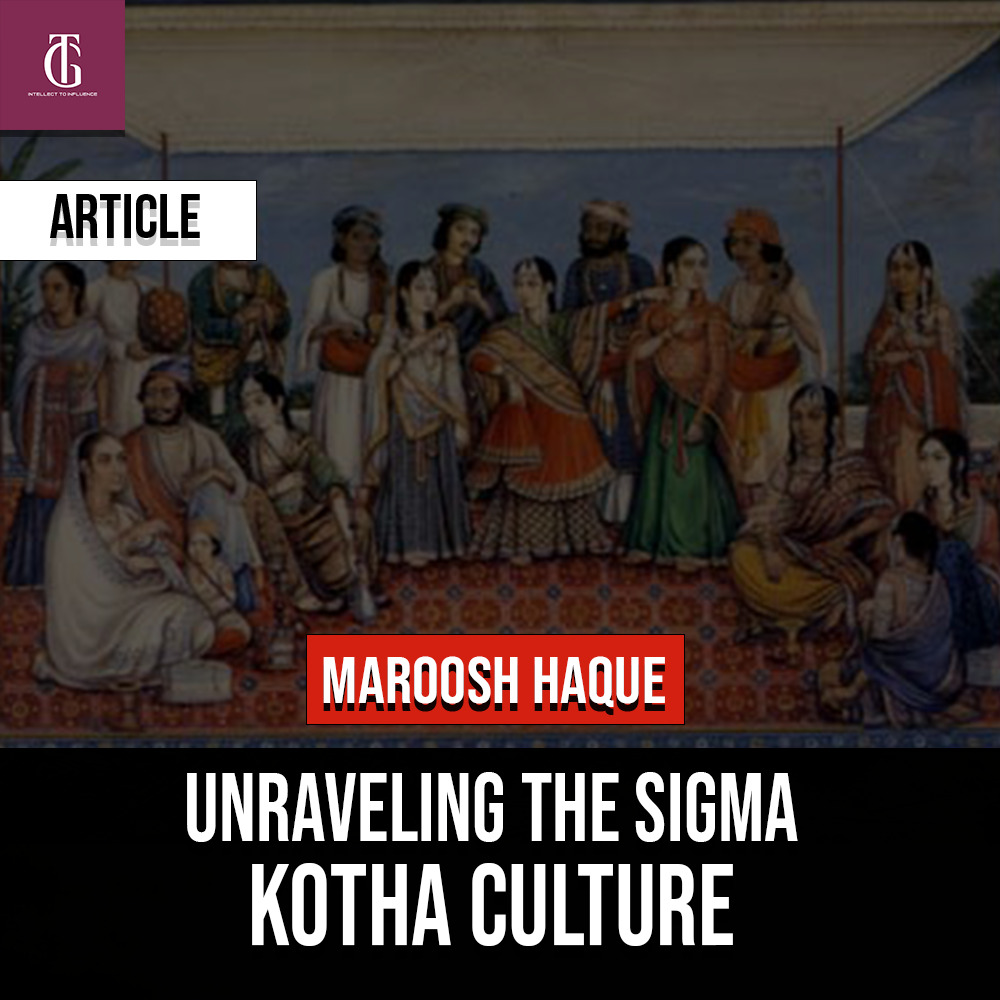In a wide hall with Mughal architecture and fountains, a veiled, thinly cladded woman sits bound tight with chains. Some of these chains lay shattered but these broken chains still bind the woman.
Her head is downcast as if she bears the judgmental eyes of thousands on her. Around her, the fountains that once flowed have dried up and the hall once filled with people, laughter and merriment is now silent as a grave. Perhaps, this is the end to her and her legacy, the woman thinks. Perhaps she is but a relic of the past, a sinful and barbarous past brought to an end by her white overlords.
The world has not reverted to how it was, even with the departure of the white oppressors and perhaps, the world will always bear the wounds it has incurred. Or will it? In the silent hall where the woman lies bound, there is a glimpse of hope in this darkness.
. A ray of sunlight drawing ever so near the woman in chains. Perhaps, all is not lost to the cruelty of the foreigners or those that sook to emulate them and their ways afterwards. Who knows in the future, the world may change yet again. Maybe, it won’t return to how it was, but just perhaps, the chains laid by the foreigners might shatter altogether.
This is a passage in the honor of the rich musical culture that existed in the Indian Subcontinent and more specifically the Tawaif culture. Tawaifs were a profession that had existed for centuries in the Indian subcontinent and had been a stable in the court culture specifically. Kothas of Tawaifs existed as renowned and revered guardians of arts, ethics, sexuality and culture.
In these Kothas, Tawaifs would sing, dance, compose and recite poetry to the elite of the society. It was in these Kothas, the noblemen of India would send their children to learn about history, culture, ethics and other higher arts.
This rich culture, which had lasted for more than a millennia, did not survive the British era. The British who had come from an entirely different culture could not comprehend the Tawaif culture for what it was. They drew comparisons of Tawaifs to prostitutes and kothas to brothels. In a century or so, the stigma of tawaifs had come into existence and the kothas were now longer seen as places for the elite to socialize or indulge in culture.
After the British exited the subcontinent, the stigma remained entrenched in the minds of the natives and to this date, the word kotha represents a brothel and a low class one at that. Gone were the days where kothas were elite places of teaching, arts, poetry and literature. To this date, the chains the British placed on us remain and their influence binding.
In the picture we drew above, the empty hall of grandeur represents the lost cultural heritage due to colonialism, the woman in the thinly clad traditional garments the tawaif profession and the veil represents the imposed morality on natives. Her scanty dressing represents the lost sexuality of the Indians. The chains represent the direct colonial influence and the chains that have shattered but still bind the woman, the lasting impacts of the colonial era. The ray of light drawing near to her represents decolonization which is still a dream but one that draws nearer.

Maroosh Haque
Maroosh Haque is a Artisan , Designer and a Social Worker.






